The Northern Mariana Islands are home to a variety of birds, both native and introduced species. The islands are located in the western Pacific Ocean and provide a unique habitat for many species of birds.
The islands are a great place for bird watching as they provide a variety of habitats from tropical to subtropical, and from lowland to montane forest.
The Northern Mariana Islands are home to over 120 species of birds, including many species of waterfowl, shorebirds, seabirds, and raptors. There are also several species of native birds, including the Mariana Fruit Dove, the Grey Imperial Pigeon, and the Mariana Swiftlet.
With its diverse bird population, the Northern Mariana Islands offers a great opportunity for birders to observe a variety of species in their natural habitats.
1. Tinian Monarch
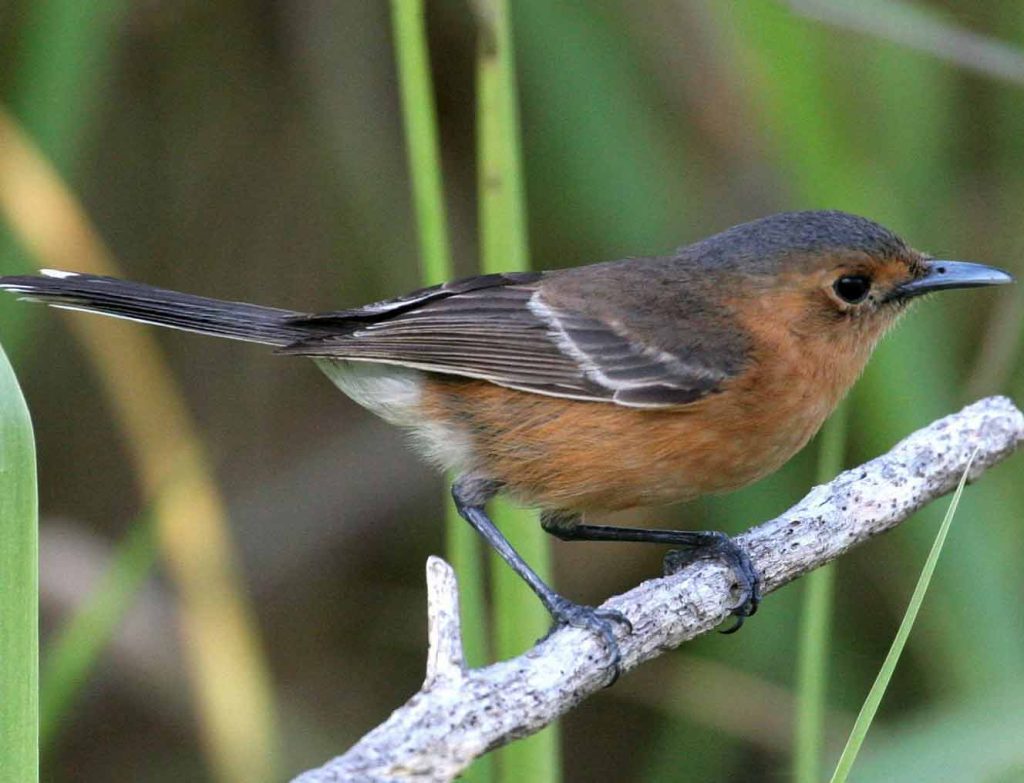
Source: ebird.org
The Tinian Monarch is a rare species of bird that is found only in the Northern Mariana Islands. This species is part of the family Monarchidae, which includes many other species of monarchs.
It is a small passerine bird that is usually around 16 cm in length and has a brownish-grey crown and wings. Its underside is usually paler in color, and it has a slightly forked tail.
The Tinian Monarch can be found in open woodlands and grasslands, and it feeds on insects and other small invertebrates. It is considered to be an important species for the Northern Mariana Islands, as it helps to maintain the balance of the local ecosystem.
Unfortunately, this species is vulnerable to habitat destruction, and its population is declining. Conservation efforts are needed to ensure that the Tinian Monarch is protected and that its population can be sustained.
| Kingdom | Animalia |
| Phylum | Chordata |
| Class | Aves |
| Order | Passeriformes |
| Family | Monarchidae |
| Genus | Monarcha |
| Species | M. takatsukasae |
2. Micronesian Myzomela
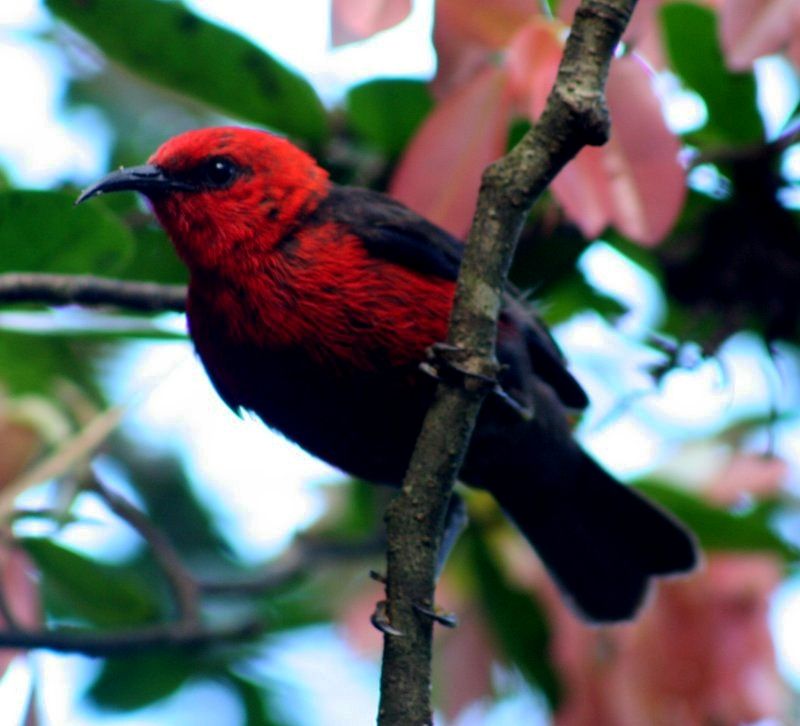
The Micronesian Myzomela is a species of bird from the honeyeater family Meliphagidae.
This species is part of a larger superspecies, which encompasses a number of related species of myzomelas that can be found both on islands and mainland areas across the Pacific and Australasia.
This large group is further divided into seven insular subspecies of the Micronesian myzomela. These subspecies are quite similar to each other in terms of their appearance but are geographically and genetically distinct.
While the Micronesian myxoma is considered a species of least concern, the seven subspecies may face different levels of risk. In order to protect this unique bird, it is important to monitor the population numbers and habitats of each subspecies.
| Kingdom | Animalia |
| Phylum | Chordata |
| Class | Aves |
| Order | Passeriformes |
| Family | Meliphagidae |
| Genus | Myzomela |
| Species | M. rubratra |
3. Micronesian Megapode
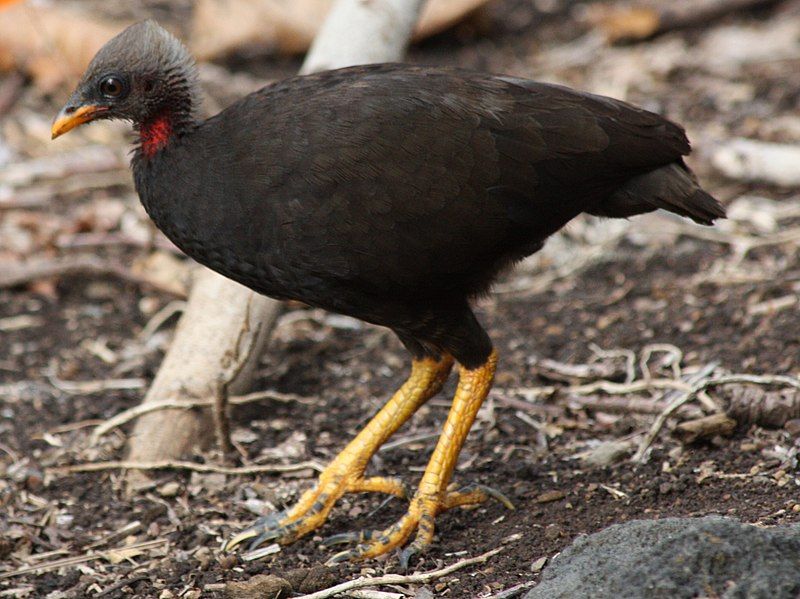
The Micronesian megapode is a species of large, terrestrial birds that are native to the islands of the Western Pacific Ocean. These birds are considered to be endangered due to their limited range and declining population.
The Micronesian megapode is also known as the Micronesian scrubfowl, and it is the only species of megapode in the Micronesian region. The Micronesian megapode is a large bird, measuring up to 25 inches in length and weighing up to 4 pounds.
It has black and brown plumage, which is speckled with white spots. The bird has a long, slender bill, and its legs and feet are yellowish-orange. The Micronesian megapode is a ground-dwelling bird that prefers to live in scrub forests and grasslands.
It generally feeds on a variety of insects, fruits, and seeds. It is also known to forage for food along the beaches of its habitat. The breeding season of the Micronesian megapode begins in the spring and continues through the summer.
During this time, the male will construct a mound of sand and soil, which he then lines with vegetation. The female will then lay her eggs inside the mound, which is then covered up to incubate.
The male will then guard the mound, which can take up to two months for the eggs to hatch. The Micronesian megapode is an endangered species due to its limited range and declining population.
It is currently listed as critically endangered by the International Union for Conservation of Nature, and its population is estimated to be fewer than 2,500 individuals.
The main threats to the species include habitat loss due to human activities, such as logging, and the introduction of non-native predators. Conservation efforts are being made to protect this species and its habitat, but its future remains uncertain.
| Kingdom | Animalia |
| Phylum | Chordata |
| Class | Aves |
| Order | Galliformes |
| Family | Megapodiidae |
| Genus | Megapodius |
| Species | M. laperouse |
4. Mariana Crow
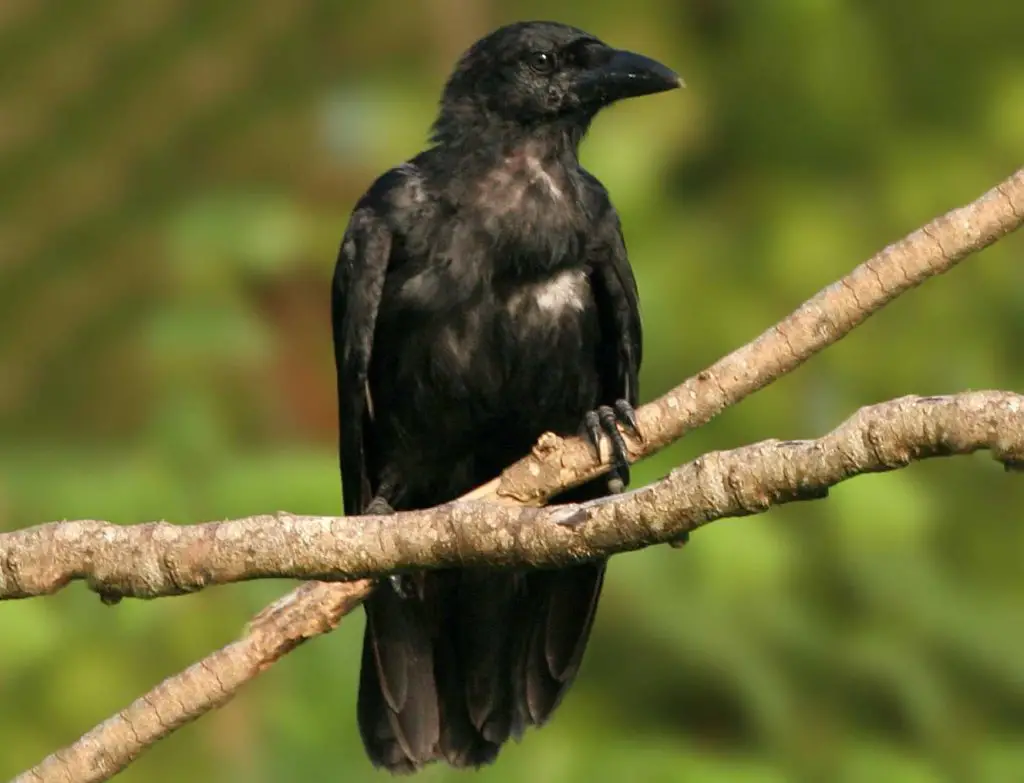
Source: ebird.org
The Mariana crow (Corvus kubaryi) is a species of crow found only in the tropical western Pacific. It is a medium-sized bird, measuring approximately 15 inches in length. It is a glossy black bird with dark eyes and a short, pointed bill.
It is found exclusively on the islands of Guam and Rota, where it is a rare sight. Unfortunately, the Mariana crow has been in decline since the 1960s.
This is largely due to habitat loss, as many of the forests where the Mariana Crow used to inhabit have been destroyed for development. The bird is also threatened by introduced predators such as cats and rats.
Additionally, the Mariana crow has suffered from inbreeding, as its small population has been unable to sustain a genetically diverse population.
In an effort to save the Mariana crow, conservationists have been working to protect their habitats and to reintroduce the bird to other areas. Additionally, captive breeding programs are being utilized to help boost the population of the Mariana crow.
If these efforts are successful, this beautiful species can once again thrive in the tropical Western Pacific.
| Kingdom | Animalia |
| Phylum | Chordata |
| Class | Aves |
| Order | Passeriformes |
| Family | Corvidae |
| Genus | Corvus |
| Species | C. kubaryi |
5. Nightingale Reed Warbler
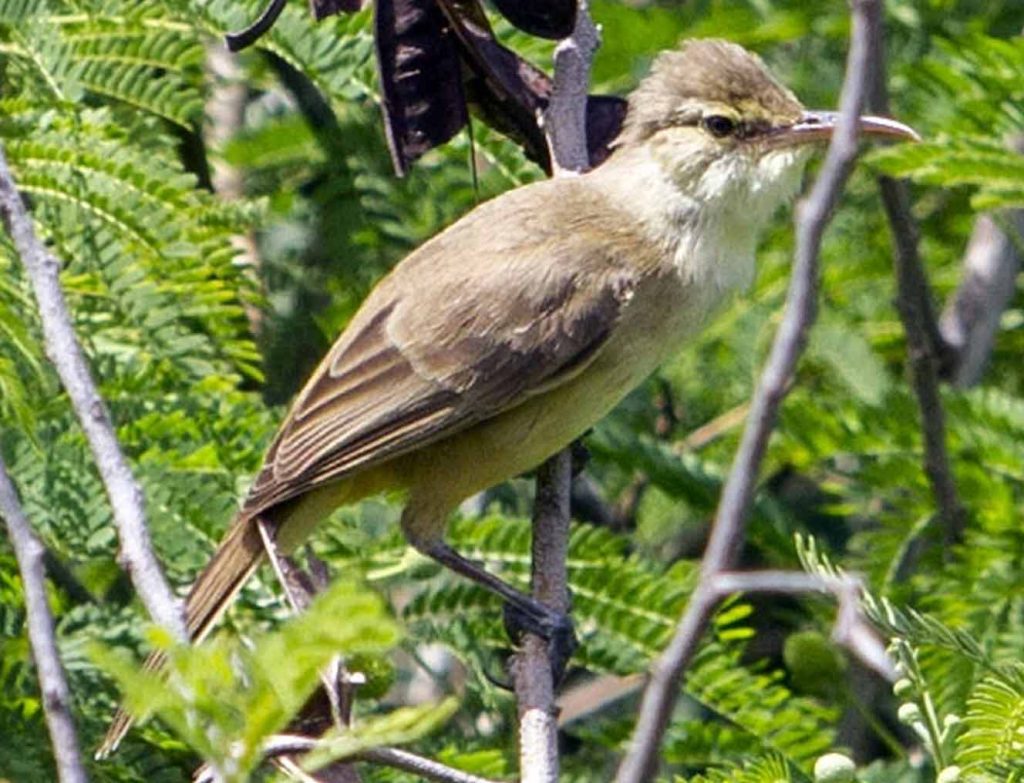
The nightingale reed warbler, also known as the Guam reed-warbler, was a species of songbird native to the island of Guam. It was a small, brown bird with a bright yellow beak and a song that was said to resemble the sound of a nightingale.
Unfortunately, this species is now extinct. The main cause of the nightingale reed warblers extinction is believed to be the introduction of the brown tree snake to Guam in the 1940s.
This snake is an aggressive predator that feeds on small birds, and the native wildlife was not adapted to dealing with this new threat.
The brown tree snake quickly decimated the nightingale reed-warbler population until it was completely gone. The nightingale reed warblers extinction is particularly tragic because it was endemic to Guam, meaning it was found nowhere else in the world.
This means that the species is gone forever, and its unique song can no longer be heard on the island. The nightingale reed warblers extinction serves as a reminder of the fragility of ecosystems and the need to protect them.
It also highlights the importance of introducing new species responsibly and carefully assessing the risk of such introductions. Without proper precautions, the effects on a fragile ecosystem can be devastating with no hope of recovery.
| Kingdom | Animalia |
| Phylum | Chordata |
| Class | Aves |
| Order | Passeriformes |
| Family | Acrocephalidae |
| Genus | Acrocephalus |
| Species | †A. luscinius |
6. Mariana Fruit Dove
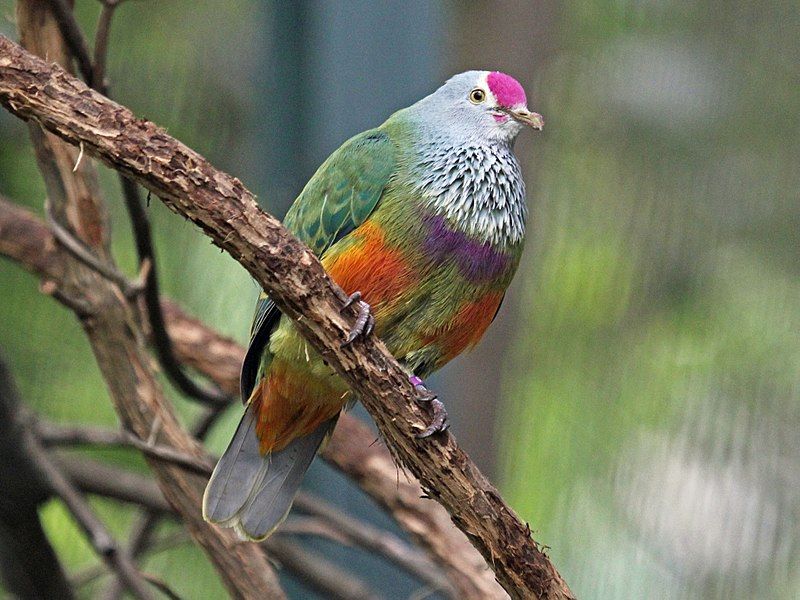
The Mariana fruit dove is a unique species of bird that is found on Guam and the Northern Marianas Islands in the Pacific Ocean. It is a small bird, reaching a maximum of 24 centimeters in length, and is green in color.
It is also known as the mwee’mwe in the Carolinian language.
This species is native and endemic to the two islands, meaning that it is only found in these areas and is not found anywhere else in the world. The Mariana fruit dove plays an important role in the environment in which it lives.
It is an important pollinator of many plants, since it feeds on their pollen and nectar, and is also important for seed dispersal since it eats and carries the seeds of many plants throughout its range.
This helps to ensure the survival of the plant species in the region. The Mariana fruit dove is also an important part of the culture of the people who inhabit the islands of Guam and the Northern Marianas.
It is often thought of as a symbol of peace and harmony and is highly respected in the indigenous culture. Despite its importance, the Mariana fruit dove is facing a number of threats.
Habitat destruction and degradation, due to human activity such as logging and development, is one of the main threats to the species. Over-harvesting for food is also a problem, as the bird is considered a delicacy in some areas.
In addition, the bird is also threatened by the introduction of invasive species, such as feral cats and rats, which can prey on the dove. The Mariana fruit dove is an invaluable species for biodiversity in the region, and it is important that steps are taken to ensure its protection and conservation.
Efforts to reduce habitat destruction and degradation, control the populations of invasive species, and raise awareness of the species’ importance are all important steps to ensure its survival.
| Kingdom | Animalia |
| Phylum | Chordata |
| Class | Aves |
| Order | Columbiformes |
| Family | Columbidae |
| Genus | Ptilinopus |
| Species | P. roseicapilla |
7. Mariana Swiftlet
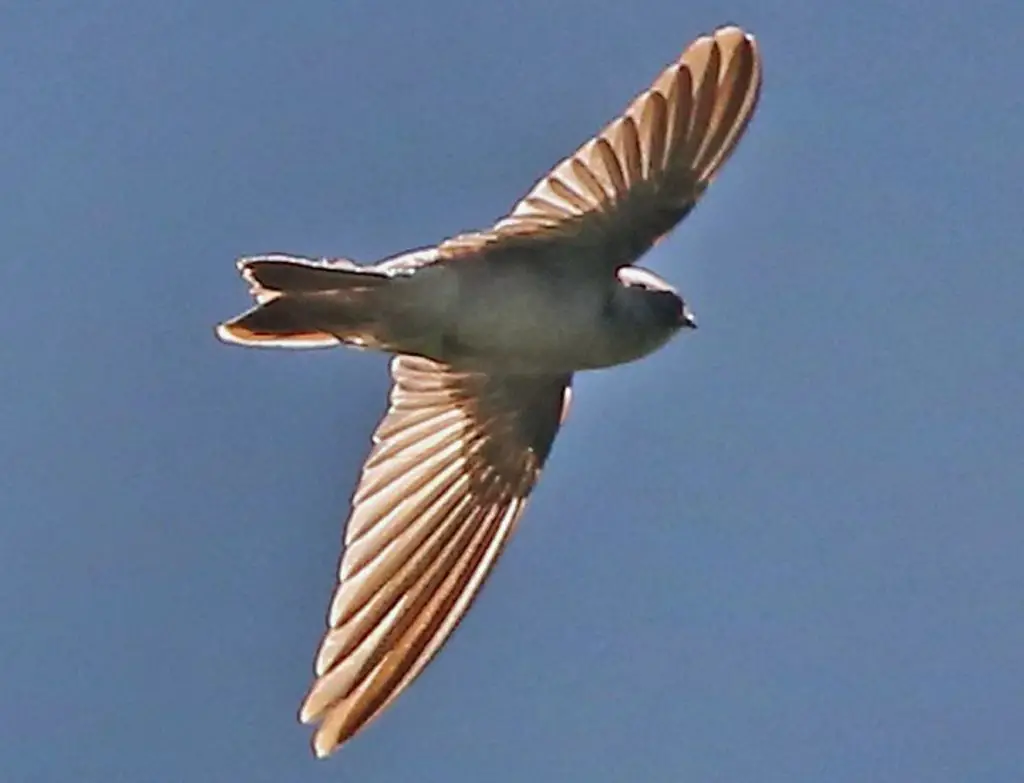
Source: ebird.org
The Mariana swiftlet, or Guam swiftlet, is a species of swiftlet that belongs to the family Apodidae. This family of birds is known for its small size and aerial acrobatics, and the Mariana swiftlet is no exception.
It is a small bird, measuring only about four inches in length and having a wingspan of approximately three inches. The Mariana swiftlet is native to the islands of Guam and the Northern Mariana Islands, where it inhabits the dense forests of these tropical locations.
This species of swiftlet is also found in the Philippines and Indonesia. The Mariana swiftlet has a brownish-gray body with a white belly and a black beak. Its wings are short and pointed, which helps it to maneuver quickly and easily in the air.
This species of swiftlet is known for its high-speed flight and its ability to fly for long distances at high altitudes. The Mariana swiftlet is a solitary bird and is rarely seen in flocks.
They feed on flying insects, such as midges, mosquitoes, and moths, which they catch in mid-flight. They are also known to eat nectar from flowers and small fruits.
This species of swiftlet is also known for its loud, high-pitched call, which is used to attract mates and to warn predators away. The Mariana swiftlet is a unique species of bird and an important part of the ecosystem in its native habitats.
Its swiftness and ability to fly for long distances at high altitudes make it a valuable predator of flying insects and other small creatures.
The species is not considered to be threatened with extinction but is listed as a species of least concern by the International Union for Conservation of Nature.
| Kingdom | Animalia |
| Phylum | Chordata |
| Class | Aves |
| Clade | Strisores |
| Order | Apodiformes |
| Family | Apodidae |
| Genus | Aerodramus |
| Species | A. bartschi |
8. Bridled White-eye
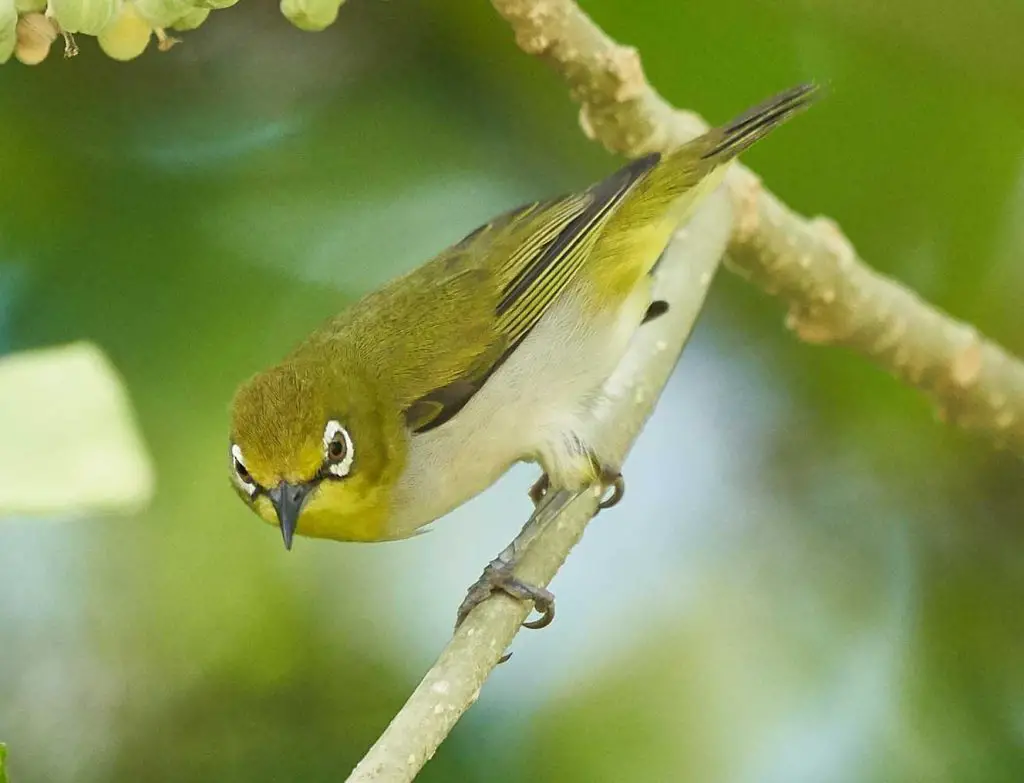
Source: birdseye.photo
The bridled white-eye is an interesting species of bird native to the Mariana Islands, which includes the island of Guam. This species is unique in that it is the only species of white-eye native to the Mariana Islands.
The bridled white-eye is an omnivore, meaning it eats both plants and animals. Its natural habitat is subtropical or tropical moist lowland forests. This type of environment is characterized by high humidity, warm temperatures, and abundant vegetation.
The bridled white-eye is usually found in the canopy layer of these forests, where it feeds on insects, fruit, and nectar. It also builds its nests in this layer, typically in the forks of trees or in dense clusters of foliage.
This species is usually found in small flocks, so it can benefit from the safety in numbers that living in groups provides. The bridled white eye is an important part of the ecology of the Mariana Islands, helping to disperse seeds and pollinate flowers.
It is also an important food source for many predators. Overall, the bridled white-eye is an important species that deserves to be protected and conserved.
| Kingdom | Animalia |
| Phylum | Chordata |
| Class | Aves |
| Order | Passeriformes |
| Family | Zosteropidae |
| Genus | Zosterops |
| Species | Z. conspicillatus |
9. White-throated Ground Dove
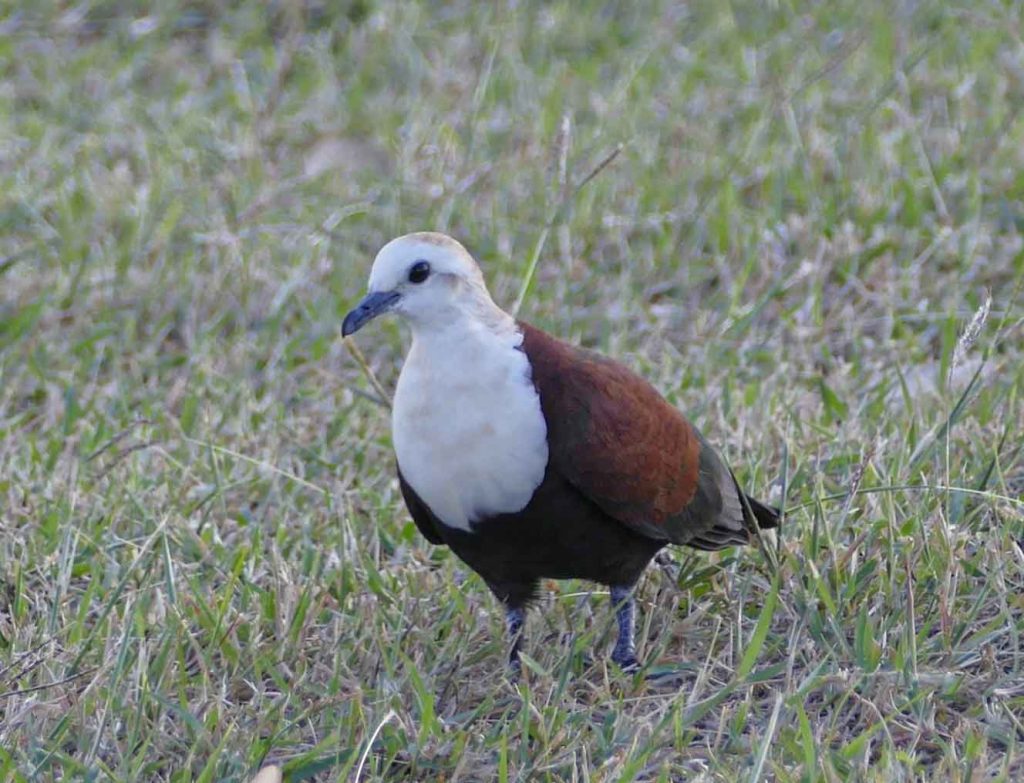
Source: ebird.org
The white-throated ground dove is a type of bird belonging to the family of ground doves, or Gallicolumba. This species of bird is classified as near-threatened, meaning that they are at risk of becoming endangered.
They were previously classified in a different genus, Alopecoenas Sharpe, 1899, however, due to a rule stating that earlier scientific names take precedence, the genus name was changed in 2019 to Pampusana Bonaparte, 1855.
This change was necessary as the prior genus name had been used for a different species of bird. As such, the new name was assigned in order to avoid confusion and to ensure accuracy in scientific classification.
| Kingdom | Animalia |
| Phylum | Chordata |
| Class | Aves |
| Order | Columbiformes |
| Family | Columbidae |
| Genus | Pampusana |
| Species | P. xanthonura |
10. Rota White-eye
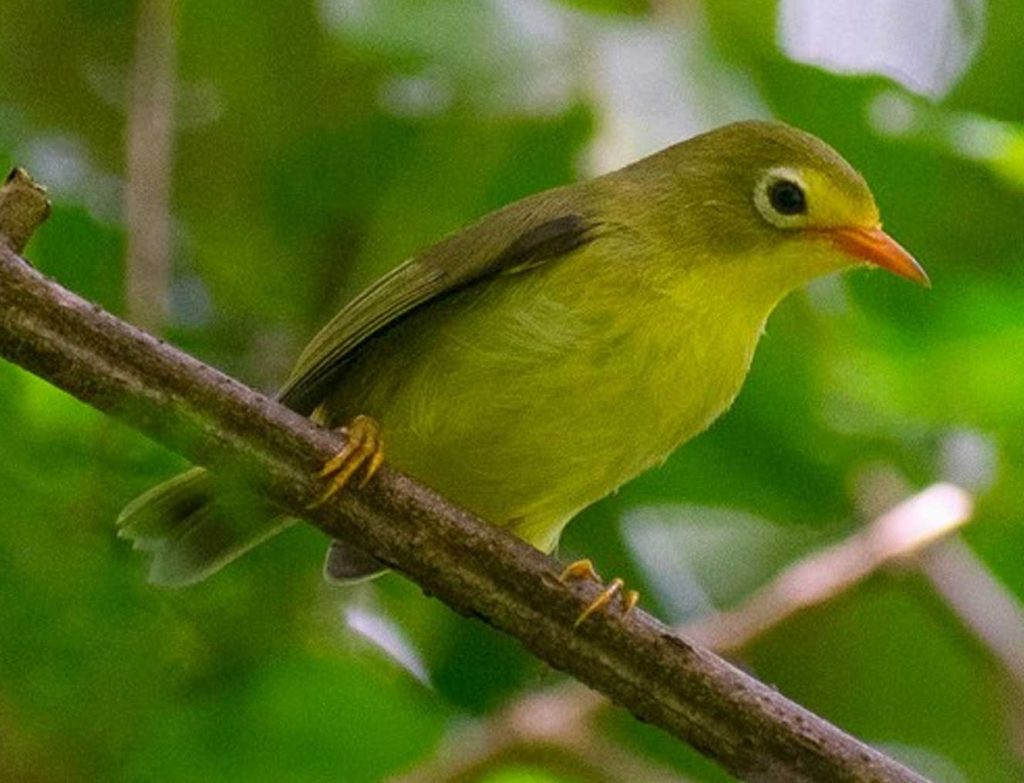
Source: ebird.org
The Rota white-eye, also known as the Rota bridled white-eye, is a bird species found exclusively in the Northern Mariana Islands. It belongs to the family Zosteropidae, which includes other species of white-eyes.
The Rota white-eye is typically found in lowland, subtropical or tropical moist forests, though it can also be found in other habitats. Unfortunately, this species is currently threatened by habitat loss.
This means that its natural environment is being destroyed, making it increasingly difficult for the Rota white-eye to survive. To ensure the continued survival of the species, it is important to take steps to protect its habitat and prevent further destruction.
| Kingdom | Animalia |
| Phylum | Chordata |
| Class | Aves |
| Order | Passeriformes |
| Family | Zosteropidae |
| Genus | Zosterops |
| Species | Z. rotensis |
11. Micronesian Starling
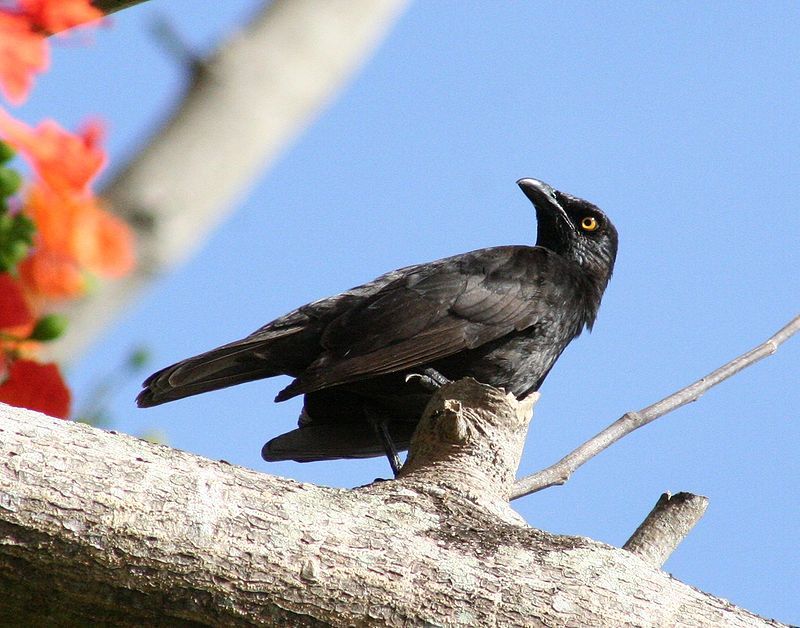
The Micronesian starling is a species of starling that belongs to the family Sturnidae. This species is native to Micronesia, the Northern Mariana Islands, and Palau.
It is typically found in subtropical or tropical dry forests and subtropical or tropical moist lowland forest habitats. These species of birds are usually small in size, having a black head, a brownish-gray body, and a yellow patch on their wings.
They are mostly seen in pairs or small groups and feed on insects, fruits, and seeds. They are also known to inhabit mangroves, coconut plantations, and other wooded areas. They have a wide range of vocalizations, including a variety of whistles, clicks, and other noises.
They are also known to produce a variety of sounds in order to attract mates. With their wide range of habitats, these species of starlings are able to adapt to a variety of environments.
They have also become quite popular as pets, as they are known to form strong bonds with their owners.
| Kingdom | Animalia |
| Phylum | Chordata |
| Class | Aves |
| Order | Passeriformes |
| Family | Sturnidae |
| Genus | Aplonis |
| Species | A. opaca |
Conclusion
The birds of the Northern Mariana Islands are a unique and fascinating part of the natural environment.
From the colorful and varied species of songbirds and waterfowl to the majestic and graceful raptors, the birds of the Northern Mariana Islands are a source of wonder and delight.
From their presence in the lush forests to their soaring flight over the glittering ocean, the birds of the Northern Mariana Islands are an integral part of the island’s beauty and charm.